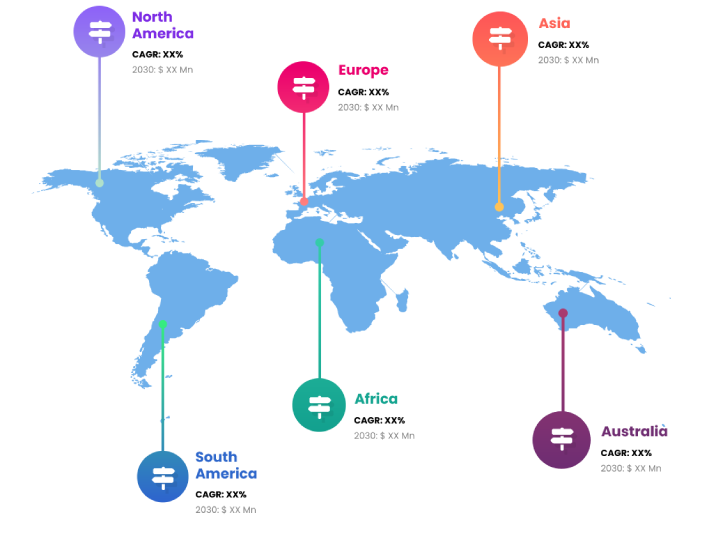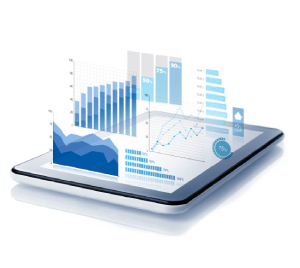Analyzing location data to produce insights is known as location analytics or geoanalytics. In order to gain more insightful data, it adds geographic data to a company's data assets. Business data, which includes information about people, transactions, assets, and events, is frequently accompanied by a geography component across all industries. When this geographic component is included in a performance study, additional connected insights may become apparent. An enterprise can use spatial analytics and other analytics tools provided by location analytics to interpret the data from a place-specific perspective, improve operational procedures, and make forecasts as needed. Businesses can increase effectiveness and efficiency by using it to assist them make better decisions.

This confluence makes it easier to find effective solutions to a variety of business difficulties. The generated insights are then fluidly disseminated throughout the company, enabling well-informed choices and operational improvements. Location analytics reveals patterns, trends, and correlations that could otherwise go undetected by fusing spatial context with operational data. This comprehensive approach not only supports process and resource allocation optimization, but also provides insightful information about consumer behavior, market trends, and productivity enhancements. In the end, location analytics acts as a strategic tool that enables businesses to use geographic data to inform, expedite, and impact their business plans.
The market for spatial analytics solutions has had substantial growth in recent years, but in 2020 it experienced a little dip because to the COVID-19 pandemic. This is because few verticals have adopted such solutions. A financial slowdown was experienced by several market participants, which had a negative effect on revenue growth.
During the epidemic, geographic information was crucial in managing community emergency services. Numerous problems have been faced by the health infrastructure sector, including hospital overcrowding and a lack of ventilators, gloves, and other necessary equipment. In order to overcome these difficulties and offer comprehensive information on resource planning and optimization across the healthcare sector, location data has emerged as a key instrument. The movements of COVID-19 positive persons in their immediate area were mapped using smartphone apps created by the governments of India, Germany, and other countries. For instance, the Indian Ministry of Healthcare introduced "AarogyaSetu" in April 2020, a Bluetooth- and location-based smartphone application that informs users of emergency services and uplifting people nearby. As a result, during the pandemic, location analytics solutions are growing as smart wearables, robots, and drone adoption increase.
The increasing use in a variety of industries is what is driving the market CAGR for location analytics supplements. In a world where digitalization is on the rise, businesses rely on data to provide the best customer experience and boost their bottom lines. The capacity to visualize geographic data can be used by businesses to better manage their business goals, including determining regional priorities, proper pricing methods, and peak buying times. Additionally, businesses can use a customer's location to deliver pertinent product information and help to nearby businesses based on their needs by combining geographic data with GIS. Important market rivals provide distinctive solutions to assist businesses in using geographic data to gain an advantage. Spatial Studio 21.2, for instance, will be made available by Oracle Corporation in August 2021. Using the website's polygon map layers, users can build zones. By using selecting tools, users define their own territories. Modern technologies like machine learning (ML), artificial intelligence (AI), and others are being used more and more in location intelligence solutions. Numerous business operations, such as asset and event management, visualization and reporting, and logistics management, utilise these sophisticated technological solutions. Geospatial data is used by the banking, finance, and government sectors to gain a competitive edge, boost revenue, and provide clients customized solutions and services. Therefore, the strategic benefits of location information across industries fuel market expansion.
The application of business intelligence (BI) to geographic or location-based data is known as location analytics. It enables businesses and organizations to combine traditional BI data with 3-D data across industries. The market for location analytics is expanding because businesses are becoming more dependent on predictive analytics, consumers are using location-based apps more frequently, and the use of spatial data and analytical tools is developing quickly. The two main elements that will affect the market growth rate are the ease of implementation on the current cellular network infrastructure and the rising demand for smart inventory management. Additional reasons that will speed the growth of the location analytics market include the rise in demand for defined network characteristics and the rise in connected device numbers. A further potential for the location analytics market is the rapid adoption of technological progress and the requirement for long-range connectivity among devices.
Report Coverage
Global Location Analytics research report categorizes the market for global based on various segments and regions, forecasts revenue growth, and analyzes trends in each submarket. Global Location Analytics report analyses the key growth drivers, opportunities, and challenges influencing the global market. Recent market developments and Location Analytics competitive strategies such as expansion, product launch and development, partnership, merger, and acquisition have been included to draw the competitive landscape in the market. The report strategically identifies and profiles the key Location Analytics market players and analyses their core competencies in each global market sub-segments.
| REPORT ATTRIBUTES | DETAILS |
|---|---|
| Study Period | 2017-2030 |
| Base Year | 2022 |
| Forecast Period | 2022-2030 |
| Historical Period | 2017-2021 |
| Unit | Value (USD Billion) |
| Key Companies Profiled | Google LLC, Precisely, IBM, SAS Institute Inc., Oracle, Microsoft, Tomtom International BV, HEXAGON, Zebra Technologies Corporation, Galigeo, Purple Innovation LLC, HERE, ALTERYX Inc., Indooratlas Ltd., CARTO, Tibco Software Inc., PLACEIQ, Ascend Cloud Solutions, ESRI, SISENSE INC, SYNCSORT, PITNEY BOWES, Maplarge, Hardcastle GIS among other |
| Segments Covered | • By Product |
| Customization Scope | Free report customization (equivalent to up to 3 analyst working days) with purchase. Addition or alteration to country, regional & segment scope |
Key Points Covered in the Report
- Market Revenue of Location Analytics Market from 2021 to 2030.
- Market Forecast for Location Analytics Market from 2021 to 2030.
- Regional Market Share and Revenue from 2021 to 2030.
- Country Market share within region from 2021 to 2030.
- Key Type and Application Revenue and forecast.
- Company Market Share Analysis, Location Analytics competitive scenario, ranking, and detailed company
profiles. - Market driver, restraints, and detailed COVID-19 impact on Location Analytics
Market
Competitive Environment:
The research provides an accurate study of the major organisations and companies operating in the global Location Analytics market, along with a comparative evaluation based on their product portfolios, corporate summaries, geographic reach, business plans, Location Analytics market shares in specific segments, and SWOT analyses. A detailed analysis of the firms' recent news and developments, such as product development, inventions, joint ventures, partnerships, mergers and acquisitions, strategic alliances, and other activities, is also included in the study. This makes it possible to assess the level of market competition as a whole.
List of Major Market Participants
Google LLC, Precisely, IBM, SAS Institute Inc., Oracle, Microsoft, Tomtom International BV, HEXAGON, Zebra Technologies Corporation, Galigeo, Purple Innovation LLC, HERE, ALTERYX Inc., Indooratlas Ltd., CARTO, Tibco Software Inc., PLACEIQ, Ascend Cloud Solutions, ESRI, SISENSE INC, SYNCSORT, PITNEY BOWES, Maplarge, Hardcastle GIS among other
Primary Target Market
- Market Players of Location Analytics
- Investors
- End-users
- Government Authorities
- Consulting And Research Firm
- Venture capitalists
- Third-party knowledge providers
- Value-Added Resellers (VARs)
Market Segment:
This study forecasts global, regional, and country revenue from 2019 to 2030. INFINITIVE DATA EXPERT has segmented the global Location Analytics market based on the below-mentioned segments:
Global Location Analytics Market, By Component
Software
Services
Global Location Analytics market, By Application
Geocoding
Reverse Geocoding
Thematic Mapping
Reporting
Data Integration
Spatial Analysis
Others
Global Location Analytics Market, By End User
BFSI
IT & Telecommunications
Retail
Healthcare
Government
Transportation
Energy & Utilities
Government
Others
Global Location Analytics market, Regional Analysis
- Europe: Germany, Uk, France, Italy, Spain, Russia, Rest of Europe
- The Asia Pacific: China,Japan,India,South Korea,Australia,Rest of Asia Pacific
- South America: Brazil, Argentina, Rest of South America
- Middle East & Africa: UAE, Saudi Arabia, Qatar, South Africa, Rest of Middle East & Africa
You will get in-depth and extensive location analytics market market research and competitor analysis for your business to help you develop more profound insights into the location analytics market Market.
Through INFINITIVE Data Expert is a professional Market Research services, I will identify the location analytics market market size, demand & opportunities, growth rate, and target audience with a comprehensive analysis of your competitors.



